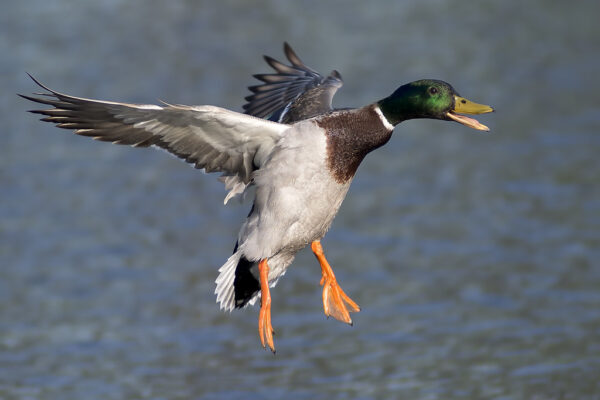A large, extinct species of predatory bird that formerly soared over New Zealand’s sky was the Haast’s eagle. Researchers are still in awe at the size and strength of these raptors, which are well-known for killing enormous, flightless moa birds.
For those with limited time, the following is a brief response to your inquiry: The female Haast’s eagle was believed to reach a height of 1.4 meters (4.6 feet) and weigh between 10-15 kg (22-33 lbs). These animals were absolutely big. This means that they are much heavier and around the same height as many adult humans.
We will examine how enormous the Haast’s eagle was in relation to typical human proportions in this article. We’ll examine estimated sizes, weights, talon sizes, wingspan, and what modern people may think of these birds if they were still soaring above.
Dimensions and Mass in Relation to Humans
The Haast’s Eagle is quite amazing in terms of its sheer size. It helps to weigh and compare these beautiful birds to people in order to get a sense of exactly how large they were.
Height
The amazing height of the Haast’s Eagle was around 3.5 feet (1.1 meters). Imagine a bird that is as tall as the typical 7-year-old to put this into perspective! It’s crucial to remember that this measurement only accounts for the eagle’s height from the ground to the top of its head; its extended wingspan, which was much more amazing, is not included.
Mass
In the world of birds, the Haast’s Eagle was a heavyweight, weighing an estimated 30 to 40 pounds (14 to 18 kg). This indicates that these eagles weighed more than a few different canine breeds and even some young kids!
They were fierce hunters because of their enormous size and powerful frame, which enabled them to take down prey that was considerably bigger than themselves.
In contrast to Humans
These enormous birds are evident when one considers the Haast’s Eagle’s height and weight in relation to humans. They could easily tower above most humans in height, and the normal person would find it almost hard to carry them due to their weight.
To think of coming across one of these enormous eagles in the wild is a sobering concept.
The Steller’s Sea Eagle is the closest living relative of the Haast’s Eagle in terms of size; they are both somewhat smaller in height but have comparable wingspans. But the immense size and strength of the extinct Haast’s Eagle surpasses even that of the Steller’s Sea Eagle.
Visit Te Ara Encyclopedia of New Zealand to find out more about the amazing Haast’s Eagle and its effects on the environment. It offers a multitude of knowledge on this intriguing species and its significance to the natural history of New Zealand.
Comparisons of Wingspans
The Haast’s Eagle was a really exceptional bird when it came to wingspan. These eagles were among the biggest known eagle species to have ever lived, with wingspans of up to 2.6 meters (8.5 ft).
Let’s compare the wingspan of the Haast’s Eagle to that of a person to put this into perspective.
The average human wingspan and Haast’s eagle
Humans typically have a wingspan of 1.8 meters (5.9 feet). Now picture yourself standing next to a fully stretched Haast’s Eagle. Seeing those enormous wings extend nearly twice as far as a normal human’s wingspan would be an incredible sight.
It makes sense that these eagles might rule their surroundings and hunt big game.
The largest human wingspan vs Haast’s Eagle
Although the Haast’s Eagle has a greater wingspan than the typical person, it’s vital to remember that there have been people with bigger wingspan sizes. Robert Wadlow holds the record for having the biggest human wingspan, measuring 2.88 meters (9 feet 5.5 inches), according to the Guinness World Records.
Despite having a magnificent wingspan, Wadlow’s is still not as long as the Haast’s Eagle.
Comparing Ratios of Wing Spread
Let’s examine the wingspan ratios of the Haast’s Eagle and humans in order to better comprehend the differences in wingspan between them. The wingspan of the Haast’s Eagle was almost 1.44 times greater than that of the typical person.
The Haast’s Eagle’s wingspan was almost 0.9 times smaller than Robert Wadlow’s.
Outstanding Talons
One feature that instantly springs to mind when describing the Haast’s Eagle is its strong talons. These massive raptors had talons that were just amazing. With talons that could reach a length of 15 cm, they were the biggest known eagle species.
That is about the size of a grizzly bear’s claw, to put things in perspective! These talons could easily break the bones of its victim since they were not only very long but also quite powerful.
Their Approach to Hunting
During the period when these eagles were extant, the Haast’s Eagle preyed mostly on enormous, flightless birds called moas. The Haast’s Eagle’s talons were ideal for bringing down such strong targets.
They would use their amazing power to paralyze their prey by swooping down from the heavens and latching onto their backs with their sharp, curved claws. The hunt would come to an abrupt end when the victim was subjugated because the eagle would use its strong beak to strike a lethal blow to the neck or head.
An Analogy with Humans
The true size of these raptors is shown when one compares the talons of the Haast’s Eagle to those of a person. Picture being confronted by a bird whose claws reach as far as your palm! It’s a very astounding idea.
Anyone who came into contact with the Haast’s Eagle’s talons would have been intimidated by their size and power. It makes sense that these birds were regarded as the top predators in their surroundings.
Visit the websites of the Audubon Society and BirdLife International to discover more about the interesting Haast’s Eagle and other bird species. They provide a multitude of global bird knowledge, including details on extinct species such as the Haast’s Eagle.
Seeing the Haast’s Eagle in Today’s World
Once upon a time, a giant bird of prey known as Harpagornis moorei, or Haast’s Eagle, flew over the skies of New Zealand. It is regarded as one of the biggest and strongest eagles in history.
Even though it is now extinct, experts and the general public are nonetheless fascinated by its amazing size.
Dimensions and Analog
With a wingspan of up to an incredible 3 meters (10 feet), the Haast’s Eagle was greater than any other known species of eagle. To put this in perspective, one of the biggest eagle species now living is the Bald Eagle, whose typical wingspan is around 2.3 meters (7.5 feet).
This indicates that the Haast’s Eagle was a much bigger and more powerful animal.
The Haast’s Eagle was around one meter (3.3 feet) tall at the shoulder. It would have been around the same height as a typical adult person as a result. Its weight and dimensions, however, were even more remarkable.
The Haast’s Eagle is thought to have weighed between 10 and 15 kg (22 and 33 pounds), compared to the normal adult human weight of 70 kg (154 pounds). The Haast’s Eagle was a true behemoth in terms of sheer bulk.
Feeding Patterns
The Haast’s Eagle was a predator that preyed mostly on moa, which were big, endemic birds of New Zealand that are flightless. The moa weighed more than 200 kilograms (440 pounds) and could grow to a height of 3.6 meters (12 feet).
With its strong beak and keen talons, the Haast’s Eagle was well suited to slay this enormous meal.
Imagine a bird that could easily swoop down from the sky, grab a moa that weighed over 200 kilograms (440 pounds), and fly away with it in its talons to get a sense of exactly how amazing the Haast’s Eagle was.
This old predator’s enormous size and power are well captured in this amazing picture.
Extinction
The Haast’s Eagle became extinct around 600 years ago, most likely as a result of a confluence of events involving the introduction of people to New Zealand and the overhunting of its main prey, the moa. The natural world has lost a great creature with such size and strength, but its memory endures in our interest with it.
The Te Ara Encyclopedia of New Zealand has comprehensive information about the remarkable Haast’s Eagle and its role in the natural history of the country, should you be interested in learning more.
Role of Ecosystems and Extinction
The enormous bird of prey known as the Haast’s Eagle, or Harpagornis moorei, was previously found in New Zealand’s South Island. With a maximum wingspan of three meters and a mass of around fifteen kilos, it was among the biggest known eagles to have ever lived.
This ferocious predator, which feeds on huge, flightless birds like moa, was essential to the environment.
It is estimated that the Haast’s Eagle became extinct around 600 years ago, not long after people arrived in New Zealand. One major cause thought to have contributed to its demise was the disappearance of its main food supply, the moa.
Due to its intense specialization in hunting these massive birds, the Haast’s Eagle saw a sharp drop in population when they vanished.
Effect on the Population of Prey
Because of its enormous size and power, the Haast’s Eagle was able to take down animals that no other bird of prey could. The Haast’s Eagle’s main target was the moa, which might weigh up to 250 kg and were incapable of flight.
They would descend from the skies and seize the moa with their formidable talons. The Haast’s Eagle was the top predator in its habitat because of its distinctive hunting style.
The Haast’s Eagle’s demise provided a sudden reprieve from predation pressure for the moa population. This, along with killing by humans, caused a sharp fall in moa populations, which in turn caused their extinction.
The normal predator-prey balance was upset as a result of the extinction of both species, which had a profound effect on the ecology.
Human Impact on the End of Life
The Haast’s Eagle became extinct due to a combination of factors, including human activity and the loss of its main food supply. Significant environmental changes were brought about by human settlement in New Zealand, including the degradation of native habitats and the introduction of new predators like dogs and rats.
The moa’s demise was exacerbated by human hunting for its flesh and feathers. The Haast’s Eagle’s food supply decreased along with the moa population. The distribution and abundance of other species were impacted by the apex predator’s demise, which had a domino effect on the environment.
A Look Back at Extinction
The Haast’s Eagle’s demise serves as a sobering reminder of how susceptible species are to human activity and how crucial it is to protect biodiversity. It draws attention to how species are interdependent throughout ecosystems and the possible repercussions of upsetting this delicate balance.
Comprehending the ecological function of extinct organisms and the contributing reasons to their extinction might provide significant knowledge for current conservation initiatives. We can work to safeguard and maintain the biodiversity that is still present on Earth by learning from the errors of the past, guaranteeing a sustainable future for both people and animals.
Final Thoughts
The Haast’s eagle was a gigantic bird of prey that would have dwarfed humans in size and power, with females perhaps growing to 1.4 m and weighing over 10 kg. The environment was altered by its enormous talons and wingspan, which created a shadow over moa prey.
Even though they are gone, you may still feel the wonder these creatures must have inspired by picturing their feathered goliath swooping above.





![20 Beautiful Birds with Long Tails [Images + IDs]](https://birdsology.com/wp-content/uploads/2023/05/50074509546_deb7a1165d_b-600x400.jpg)
